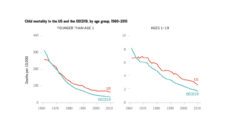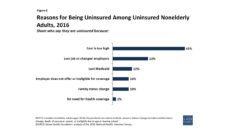Change is nothing new for young adults; they experience it as they move on from high school to college, from college to internships and jobs, and from one job to another. During these phases, health insurance is one of the many elements of a young adult’s life that keeps changing. Insurers call these changes “churning,” representing the rolling from one type of health plan to the next. Younger adults churn more than their elders.
Between 2008 and 2011, only 21% of adults of ages 19 to 35 had continuous health insurance coverage. Lack of complete or continuous coverage because of churning may result in few doctor visits and not enough preventive care. It may also lead to young adults delaying receiving care because of costly procedures and medications. Those not fluent in the language of healthcare coverage may struggle with navigating the insurance landscape during times of transition.
Researchers from University of California, San Francisco conducted a study to identify gaps in health insurance clarity among youth. They studied young adults in California, the state with the most people ages 18 to 34 in the country, and a state where income and wealth levels are particularly diverse. California was also one of the first to expand Medicaid in the wake of the Affordable Care Act, producing a historic drop in the number of uninsured people as a result. Still, California ranks high in the amount and frequency of churning.
The researchers interviewed health department administrators, state legislators, insurance company employees, and health advocates. These key informants explained why young adults are more vulnerable to churning, and how it affects their care.
When faced with the reality of having to independently manage their purchases of health insurance, many young adults have trouble grasping the meaning of basic health insurance lingo.
The results demonstrated that when faced with the reality of having to independently manage their purchases of health insurance, many young adults have trouble grasping the meaning of basic health insurance lingo. Terms like deductible, cost-sharing, premium, and in-network are difficult to understand, and how they affect what insurers actually pay for is not always clear. One key informant indicated how this may be particularly true for young women who discover their contraception method is not covered under a new insurance plan. Further, this lack of clarity regarding coverage may act as a barrier to accessing services like behavioral health, which go underutilized.
Some state policies exist to protect coverage in times of churning. In California, patients who have to change their insurance are still allowed to visit their primary health provider during the transition period. But this is not made clear to young adults before they experience churning.
The researchers and their key informants emphasized how current information on health plans assumes that everyone understands insurance and health-specific terms. They called for simpler language and greater promotion of health care services that may be available through high schools and colleges where young adults can better access and receive care. The informants also mentioned how insurers need to focus on helping youths who are not fluent in English, are from low-income backgrounds, or lack stable housing—like foster youth; these young adults may be particularly vulnerable to missing out on the benefits of health insurance. Finally, any young adult-oriented information about health insurance may be delivered best online, as opposed to through the mail or phone. The Kaiser Family Foundation has compiled a list of frequently asked questions that may be a good place to start.













